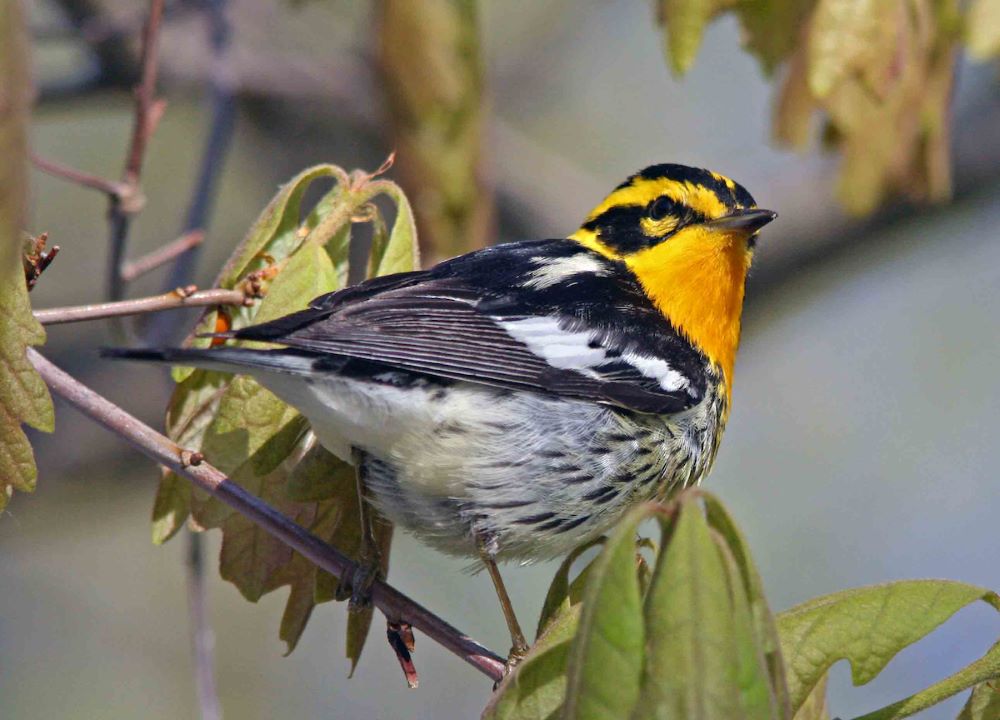
If there are spruce, fir, or hemlock trees around your backyard, listen carefully for the high-pitched, buzzy song of the Blackburnian Warbler. While they can be difficult to see, often hidden among foliage high in the canopy, and share habitat with several closely-related species, like Black-throated Green and Magnolia Warblers, there is no mistaking a Blackburnian Warbler when you see it. They are the only warbler seen in Maine with an orange throat, which stands out against a black cap, cheek, back, and wing. The name for this bird in Puerto Rican Spanish, reinita de fuego, translates to “fire warbler” which accurately describes the shockingly ember-like plumage of the Blackburnian Warbler. In most other dialects of Spanish and French, the bird is called the equivalent of Orange-throated Warbler.
The English name was chosen by naturalist Thomas Pennant to honor English botanist Anna Blackburne, and is one of the eponymous bird names that will be changed by the American Ornithological Society in the coming years, perhaps to Orange-throated Warbler. Whatever you call it, these are some of the most spectacular warblers that can be seen in Maine, and they nest throughout the entire state, generally in the tops of coniferous trees. They actively forage there for insects, mostly moths and their larvae, like spruce budworm species. In the fall, they migrate from the boreal and northern hardwood forests to the slopes of the northern Andes, especially in Colombia, where they also feed on insects in tree canopies. They are yet another species that demonstrates the need to conserve forest habitats and native trees throughout the Americas, in addition to our own backyards!
Backyard Bird of the Month is a feature by Maine Audubon created for the Maine Home Garden News, the newsletter of the University of Maine Cooperative Extension: Garden and Yard
Photo by Hans Toom, used by permission
